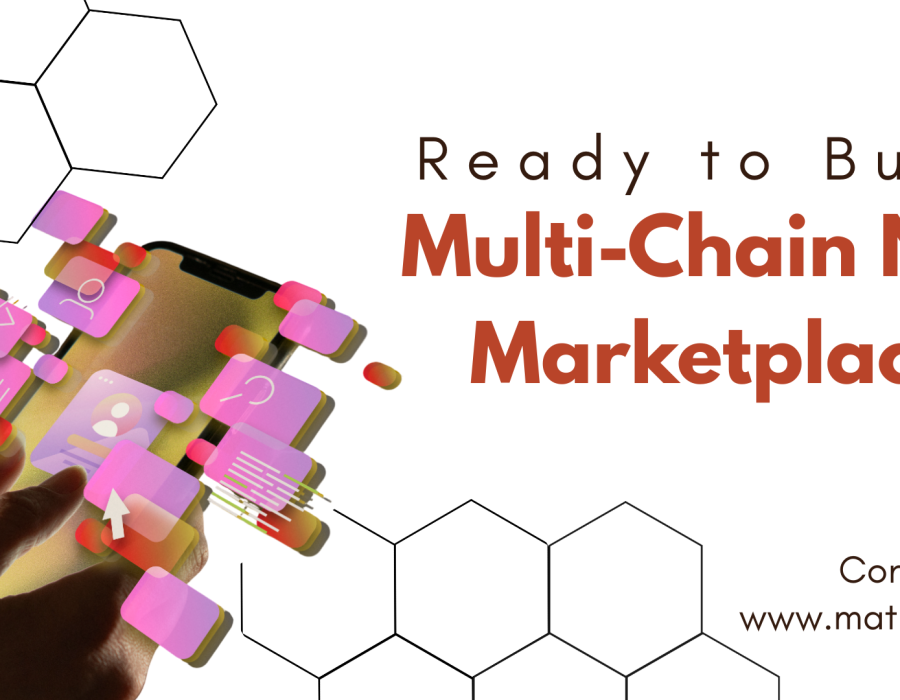The NFT wave is just evolving with each passing day. Today, it is no longer about launching a marketplace on a single blockchain. The big opportunity now lies in multi-chain NFT marketplaces that connect multiple blockchains, giving users flexibility, better liquidity, and cross-chain access.
If you are a business leader thinking of tapping into this next-generation NFT model, building a multi-chain NFT marketplace from scratch may really feel complicated, but it is totally possible with the proper approach. Let's break it now.
Why Go Multi-Chain?
Before we dive into the ‘how,’ let’s tackle the ‘why.’
Most NFT platforms today are built on Ethereum or Solana. But these networks have limitations, be it high gas fees, congestion, or restricted user reach. A multi-chain marketplace lets you
- Reach wider communities across multiple chains
- Offer users cheaper transactions and faster speeds
- Enable seamless cross-chain NFT trading and liquidity flow
- Future-proof your platform as new chains emerge
Think of it as running an e-commerce store that ships globally rather than locally. Bigger audience. More transactions. Better business.
Step 1: Define Your Marketplace Model
Start by deciding what kind of NFT marketplace you want to launch. Is it
- A general-purpose marketplace like OpenSea?
- A niche one, specifically for gaming, music, sports, and virtual real estate?
This will shape your features, design, and overall tech architecture. Also, identify your revenue model. Will you take a cut on NFT sales? Offer premium features to creators? Charge minting fees? These decisions will impact the way you structure your smart contracts and backend logic.
Step 2: Choose the Right Blockchain
The next step is blockchain selection. Multi-chain does not mean every chain. It means picking the right mix that complements your target audience. Try to balance reach, speed, cost, and developer support.
Here are a few blockchains to consider
- Ethereum – Known for premium NFTs and high-end collectors.
- Polygon – Lower gas fees, great for mainstream adoption.
- BNB Chain – Fast and affordable, ideal for DeFi and NFTs.
- Solana – High-speed transactions, good for gaming.
- Avalanche / Flow / Base – Gaining traction for specific niches.
Step 3: Smart Contract Development
At the core of your NFT marketplace are smart contracts. These automate minting, listing, selling, royalties, and transfers. When building for multi-chain, you will need
- Separate smart contracts for each chain, adapted to their standards
- Cross-chain bridge integration, if you want users to move assets between chains
- Royalty logic that works across chains
Give equal importance to security and Smart contract audits. Because any bug can cost you and your users real money.
Step 4: Backend Infrastructure
The next step involves building a robust backend infrastructure. You will need a robust backend to
- Index NFT data across chains
- Manage user profiles, wallets, listings, transactions, and history
- Handle metadata storage and retrieval (IPFS or hybrid cloud systems)
- Monitor smart contracts and chain events in real time
Using a microservices architecture is a smart move. It makes the system scalable and easier to maintain as your marketplace grows or adds new chains.
Step 5: Wallet and Cross-Chain Integration
The NFT marketplace you build must let users connect their wallets and trade seamlessly. This requires you to integrate it with wallets and cross-chain bridges.
- Support for multi-chain wallets like MetaMask, Phantom, WalletConnect, etc.
- Cross-chain bridges like LayerZero, Wormhole, Axelar, etc so NFTs and tokens can move between chains
- Optional fiat on-ramps to facilitate easier onboarding for non-crypto-savvy users
Step 6: Front-End Development
Your UI is the first impression, and it needs to reflect your multi-chain vision. Make sure the UX does not feel fragmented between chains. The user interface must
- Let users filter NFTs by chain, category, or price
- Show real-time stats: sales volume, gas fees, trends per chain
- Display verified badges for creators across chains
- Be optimized for mobile and desktop, and accessible for global users
Step 7: Testing and Deployment
This testing phase involves the following steps
- Conduct functionality testing on each supported chain
- Simulate edge cases like high traffic, bridge failures, and contract bugs
- Make sure metadata loads correctly across all device types
Only once you have tested smart contracts, UX flows, and backend services should you move to the final deployment phase.
Step 8: Post-Launch Strategy
Going live is just the beginning. Post-launch, your focus should shift to
- Onboarding creators and collections across supported chains
- Running cross-chain marketing campaigns and community incentives
- Monitoring performance and updating smart contracts when needed
- Continuously adding new chains and features based on demand
Also, consider DAO integration or governance tokens if you plan to make your platform more community-driven in the long run.
Wrapping Up: The Smarter Way to Build
Building a multi-chain NFT marketplace from scratch is not easy, but it is 100% possible with the right tech team, strategic decisions, and a clear user-first vision.
If, however, you want to fast-track it or want experts who have already built multi-chain NFT ecosystems, you don't have to start from zero. Then Maticz could be your ideal partner.
Maticz specializes in offering multi-chain NFT marketplace development services that assist businesses in launching feature-rich, scalable platforms spread across Ethereum, BNB Chain, Polygon, etc. From custom smart contracts to the integration of bridges, we do it all so you can concentrate on running your own business. Want to build the future of digital ownership? Let’s make it happen.





Comments